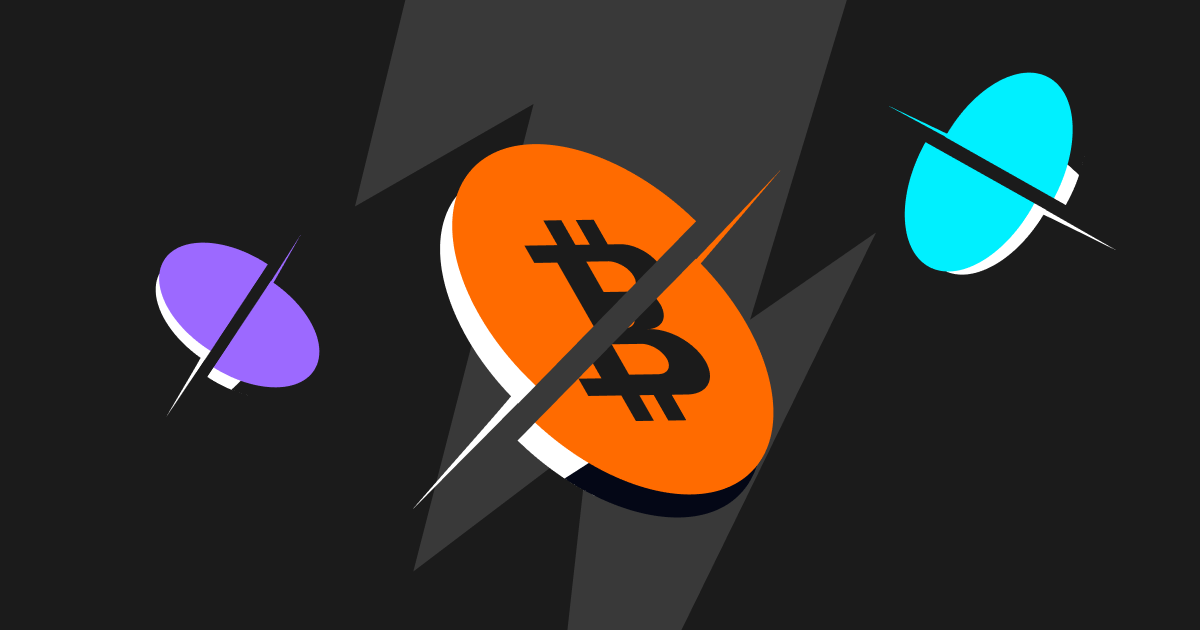Comparing Halving Events: Bitcoin and Other Cryptocurrencies
In the dynamic world of cryptocurrencies, 'halving' is a common yet distinct process for each currency. Along with Bitcoin, cryptocurrencies such as Litecoin (LTC), Bitcoin Cash (BCH), Bitcoin SV (BSV), Dash (DASH), and Zcash (ZEC) have undergone halving, each with its unique ways. This article delves into the nuances of these halving events.
Crypto Halving: The Basics
Crypto halving is a significant event in the lifecycle of certain cryptocurrencies, most notably Bitcoin and its derivatives. It refers to the process of halving the reward that miners receive for adding new blocks to the blockchain. This happens at pre-set intervals, typically after a certain number of blocks are mined. Halving reduces the rate at which new coins enter circulation, aiming to prevent inflation and increase scarcity, similar to mining precious resources. It has a notable impact on a cryptocurrency's economy, including price, mining profitability, and network security.
List Of Crypto Halving Dates
The table below is a summary of the coins that halve and relevant parameters as of 12/12/2023.
Bitcoin(BTC)
Litecoin(LTC)
Bitcoin Cash(BCH)
Bitcoin SV (BSV)
Dash (DASH)
Zcash (ZEC)
Genesis block
2009
2011
2017
2018
2014
2016
Max supply
21M
84M
21M
21M
18.9M
21M
Periodic halving (years)
4
4
4
4
-
4
Block time (mins)
10
2.5
10
10
2.5
1.25
Current block reward
6.25 BTC
12.5 LTC
6.25 BCH
6.25 BSV
1.67 DASH
2.5 ZEC
Bitcoin Halving
Bitcoin (BTC) is the first and most well-known cryptocurrency, invented by an unknown person or group of people using the pseudonym Satoshi Nakamoto in 2009. It operates on a decentralized network of computers using blockchain technology, allowing secure, peer-to-peer transactions without the need for intermediaries.
Bitcoin quickly gained popularity among early adopters and tech enthusiasts, and its value skyrocketed from a fraction of a cent to over US$1,000 within a few years. In the following years, other cryptocurrencies such as Litecoin, Polkadot, and Cardano were created, each with its own unique features and use cases.
The 2024 Bitcoin halving will happen at 840,000 block height (the number of blocks mined), which is going to happen between April 25th and May 8th, 2024. Here's a timeline of Bitcoin halving events:
Bitcoin Halving Event
Date
Block Height
Reward per block
Launch date
January 2009
Genesis block
50 BTC
The first halving
November 2012
210,000
25 BTC
The second halving
July 2016
420,000
12.5 BTC
The third halving
May 2020
630,000
6.25 BTC
The next halving
May 2024 (approx)
840,000
3.125 BTC
For insights into Bitcoin's halving, consider exploring these articles:
Bitcoin Halving 2024 Countdown
A Beginner’s Guide to Bitcoin Halving
Bitcoin's halving: Top 10 Burning Questions Answered
Litecoin Halving
Created by Charlie Lee, a former Google engineer and Director of Engineering at Coinbase, in October 2011, Litecoin is often seen as the "silver" to Bitcoin's "gold." It operates on a decentralized, open-source global payment network. Lee aimed to overcome certain Bitcoin limitations, leading to Litecoin's faster transaction confirmation times and making it more suitable for everyday transactions.
Litecoin's halving, like Bitcoin's, is a predetermined event where the block reward halves approximately every four years or after every 840,000 blocks. This cycle is projected to continue until 2142. While its market impact is less pronounced than Bitcoin's, LTC typically sees increased trading volume and price volatility preceding a halving event.
Litecoin Halving Dates:
Litecoin Halving Event
Date
Block Height
Reward per block
Launch date
October 2011
Genesis block
50 LTC
The first halving
August 2015
840,000
25 LTC
The second halving
August 2019
1,680,000
12.5 LTC
The third halving
August 2023
2,520,000
6.25 LTC
The next halving
July 2027 (approx)
3,360,000
3.125 LTC
Bitcoin Cash Halving
Bitcoin Cash emerged in August 2017 from a Bitcoin blockchain hard fork. Known for processing over 100 transactions per second due to its larger block size, BCH offers a decentralized currency system, emphasizing peer-to-peer electronic cash.
Bitcoin Cash's first halving occurred in April 2020. Contrary to expectations, BCH's halving did not coincide with Bitcoin's due to a different mining algorithm, which led to an accelerated block mining rate and an earlier halving date.
Bitcoin Cash Halving Dates:
Bitcoin Cash Halving Event
Date
Block Height
Reward per block
Launch date
August 2017
Genesis block
12.5 BCH
The first halving
April 2020
630,000
6.25 BCH
The next halving
April 2024 (approx)
850,000
3.125 BCH
However, right after the halving event took place, it experienced almost a 2-hour standstill before the next block was mined. Despite Bitcoin Cash's capability to handle around 116 transactions per second, this rate plummeted to just 1.11 TPS.
Right after halving, block 630,001 is only mined 2 hours later (source: blockchair.com)
This is due to BCH sharing the same mining mechanics as Bitcoin, miners can easily do a switcheroo. This led to a substantial number of miners leaving the Bitcoin Cash network in search of better profits elsewhere. As a result, the mining difficulty levels increased, making it less profitable for miners who continued to mine BCH tokens. As such, the upcoming BCH halving event can be quite controversial.
Bitcoin Satoshi Vision (Bitcoin SV) Halving
Bitcoin SV (BSV), forked from BCH, was created in November 2018, by a group led by Craig Wright, who claims to be Satoshi Nakamoto. BSV's unbounded block size, reaching up to 4GB, enables low and stable transaction fees.
BSV's uncapped block size allows miners to choose their preferred block sizes. However, this flexibility poses a centralization risk and vulnerability to attacks, as evidenced by an incident in October 2022 where an unknown miner controlled over 51% of the hash power.
Bitcoin SV Halving Dates:
Bitcoin SV Halving Event
Date
Block Height
Reward per block
Launch date
November 2018
Genesis block
12.5 BSV
The first halving
April 2020
630,000
6.25 BSV
The next halving
2024 (approx)
840,000
3.125 BSV
Dash Halving
Dash is an open-source cryptocurrency that came into existence in 2014, branching off from the Bitcoin protocol. It functions as a decentralized autonomous organization (DAO) and is managed by "masternodes" (Powerful servers backed by collateral held in Dash, and are designed to provide advanced services and governance on the blockchain).
Unlike the abrupt halvings of other cryptocurrencies, Dash undergoes a gradual 7.14% reduction approximately every 383.25 days.
Zcash Halving
Developed by experts from MIT and Johns Hopkins, Zcash stands out for its privacy technology, offering confidential transactions.
Zcash has a unique reward allocation. Upon launch, Zcash set up a reward allocation plan dubbed Founder’s Reward (FR) to fund Zcash's development. According to the reward plan, 80% (5 ZEC) of the mining rewards would be given to miners, while 20% would be distributed among Electric Coin Company founders and investors.
Source: electriccoin.co
After FR expires, the community voted and approved that Miners will receive 80% of the mining reward. The remaining 20% will be divided between grants to fund independent 3rd party developers (8%), Electric Coin Co (7%), and the Zcash Foundation (5%), which help to sustain miners from continuing to mine ZEC.
Zcash Halving Dates:
Zcash Halving Event
Date
Block Height
Reward per block
Launch date
October 2016
Genesis block
0 ZEC
Slow-start mining
October 2016
20,000
12.5 ZEC
Blossom upgrade
December 2019
653,600
6.25 ZEC
The first halving (Canopy upgrade)
November 2020
1,046,400
3.125 ZEC
The second halving
May 2023
2,092,800
1.5625 ZEC
The next halving
2027 (approx)
3,139,200
0.78125 ZEC
Despite varying halving mechanisms, these cryptocurrencies share a common purpose: to regulate the influx of new tokens, balance supply and demand, and maintain token value. As the crypto landscape evolves, these halving events play a pivotal role in shaping each currency's future. Stay updated with the latest developments in this fascinating domain at Bitget Academy.
Disclaimer: The opinions expressed in this article are for informational purposes only. This article does not constitute an endorsement of any of the products and services discussed or investment, financial, or trading advice. Qualified professionals should be consulted prior to making financial decisions.































